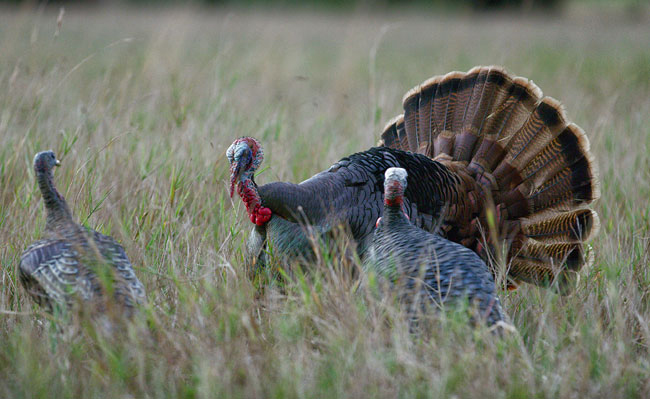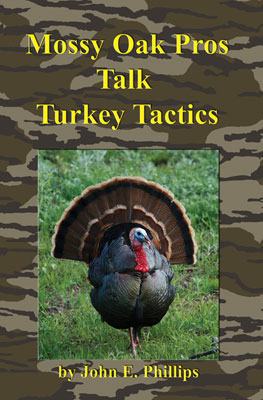Mossy Oak National ProStaff member Pat Strawser of Millersburg, Pennsylvania, has been hunting and calling turkeys for 35 years. He started entering turkey calling contests in the 1980s. “I grew up in the revival of turkey hunting and turkey calling and the restocking of the wild turkey nationally,” Strawser explained. He has worn Mossy Oak Bottomland since Toxey Haas first introduced it in 1986 and says, “I am a die-hard Bottomland fan.”
Pat Strawser | Mossy Oak ProStaff

The main reason I like to hunt Osceola turkeys in Florida is because the season there starts the first week in March, while turkey season begins much later in most other states. The gobblers we hunt seem to be much more aggressive than the turkeys I hunt in Pennsylvania. The cool mornings and the hot days are a big contrast from the cold and often snowy mornings and cold days during Pennsylvania’s turkey season.
The Osceolas are different from the Easterns, the Rios and the Merriam’s I've hunted. I’ve found that the Osceola gobblers are much more vocal in the trees when they're roosting than any of the other gobblers, and they're less vocal when they hit the ground than most other gobblers.
Florida has a lot of predators particularly bobcats and foxes. Although the Osceola gobbler may roost in a swamp over water, when he flies down, more than likely, he will try to land out in a pasture where he can meet his hen and also see any predators that may be sneaking up on him. Just about all of our pastures are bordered by very thick swamps that are impenetrable. If you go two feet inside the swamp, you usually can’t see anything. So, most of our hunts are on the edges of pastures.
We use Avian-X decoys to decoy the gobblers. Often our hunters get to see gobblers strutting, drumming and coming to them from a long way off out in those pastures. If the gobblers who land in those pastures see a strutting decoy, they're coming to that decoy. An Osceola hunt is a very exciting hunt, because in many sections of the country, you may hear and not see a gobbler until he steps right out in front of you within shotgun range. Hunters like to see turkeys gobble, strut, drum and put on a show for them, and those Osceola birds will do all of these things.
Because only four of us are in camp at any one time, we do all the cooking and cleaning for our hunters. We spend quality time with them. We have about a 50-percent repeat business, and we've been hunting with good numbers of our hunters for several years. One of the guys I hunted with this year was Paul, and this was his tenth year to come down and hunt Osceolas with me.
I love to see different hunters’ reactions when a turkey starts gobbling, strutting and coming in toward us. Then when they squeeze the trigger, and the birds go down, I love to watch their excitement. When you have your gun in your hand as the turkey is approaching, I think you get so locked-in on the turkey you don’t get to see everything that’s happening around you.
I'm much more relaxed when I'm calling than when I have the gun in my hand. I can listen to the turkeys better, and I can use different calls on them. I can use all my friction calls, because I can have friction calls in my hands during the entire hunt. When the turkey gets close, I can call really softly without the turkey seeing me and bring him in really tight to my hunter. I feel like I can enjoy the hunt more sitting behind the hunter than I can if I’m the gunner. If I name 10 things that I really enjoy about a turkey hunt, squeezing the trigger doesn’t even make that top 10.
I like hunting with and guiding people from all over the nation. We have hunters from Texas, Louisiana, Pennsylvania, Michigan and all points on the compass. I think bringing in people from other places and watching them enjoy the habitat and weather that we have in Florida during turkey season is neat.

To learn more about turkey hunting, check out John E. Phillips’ Kindle eBook and print book, “Mossy Oak Pros Talk Turkey Tactics.” For a free copy of John E. Phillips’ “The Turkey Gobbler Getter Manual,” download here.



























